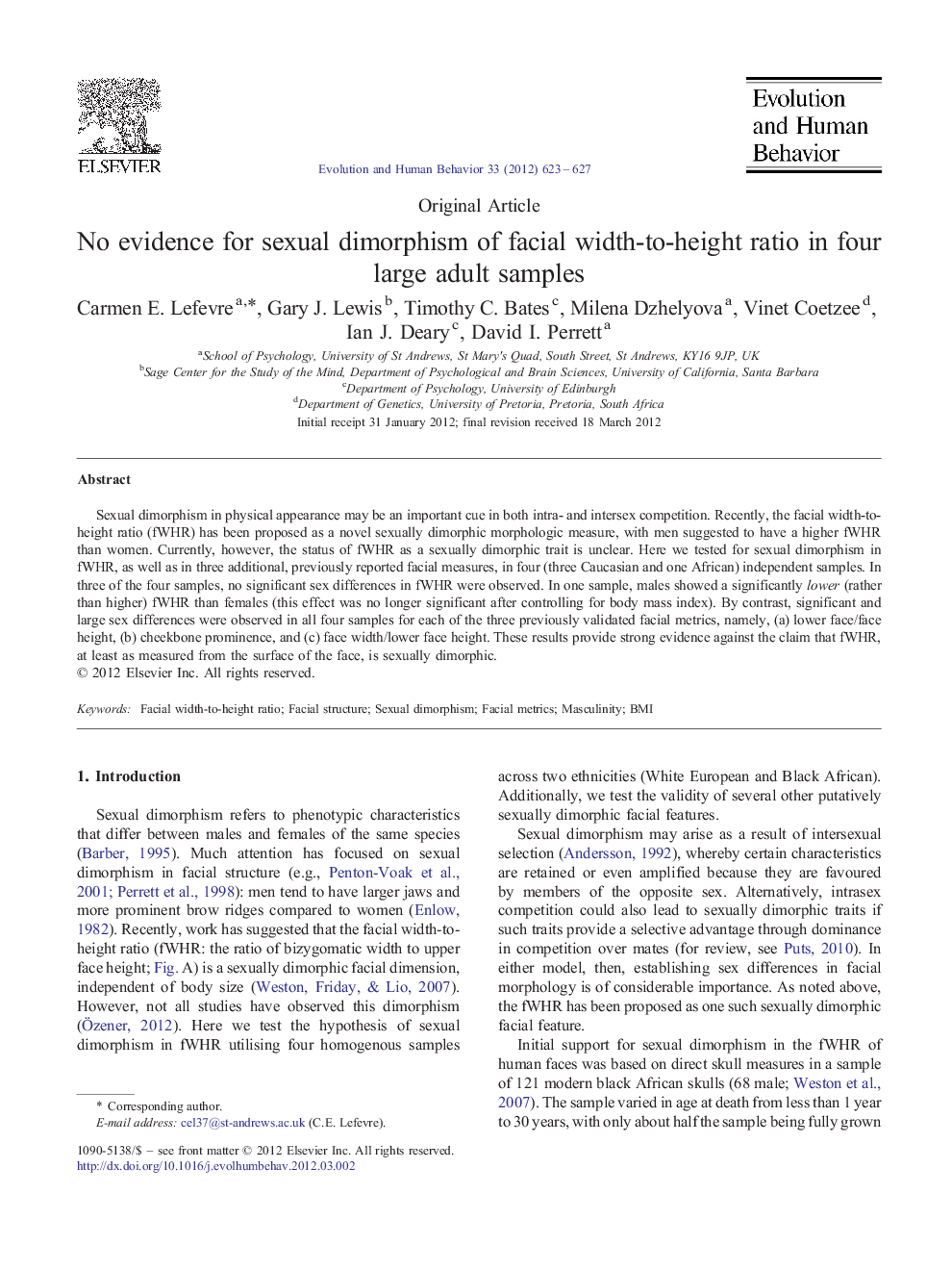| Article ID | Journal | Published Year | Pages | File Type |
|---|---|---|---|---|
| 943167 | Evolution and Human Behavior | 2012 | 5 Pages |
Sexual dimorphism in physical appearance may be an important cue in both intra- and intersex competition. Recently, the facial width-to-height ratio (fWHR) has been proposed as a novel sexually dimorphic morphologic measure, with men suggested to have a higher fWHR than women. Currently, however, the status of fWHR as a sexually dimorphic trait is unclear. Here we tested for sexual dimorphism in fWHR, as well as in three additional, previously reported facial measures, in four (three Caucasian and one African) independent samples. In three of the four samples, no significant sex differences in fWHR were observed. In one sample, males showed a significantly lower (rather than higher) fWHR than females (this effect was no longer significant after controlling for body mass index). By contrast, significant and large sex differences were observed in all four samples for each of the three previously validated facial metrics, namely, (a) lower face/face height, (b) cheekbone prominence, and (c) face width/lower face height. These results provide strong evidence against the claim that fWHR, at least as measured from the surface of the face, is sexually dimorphic.
